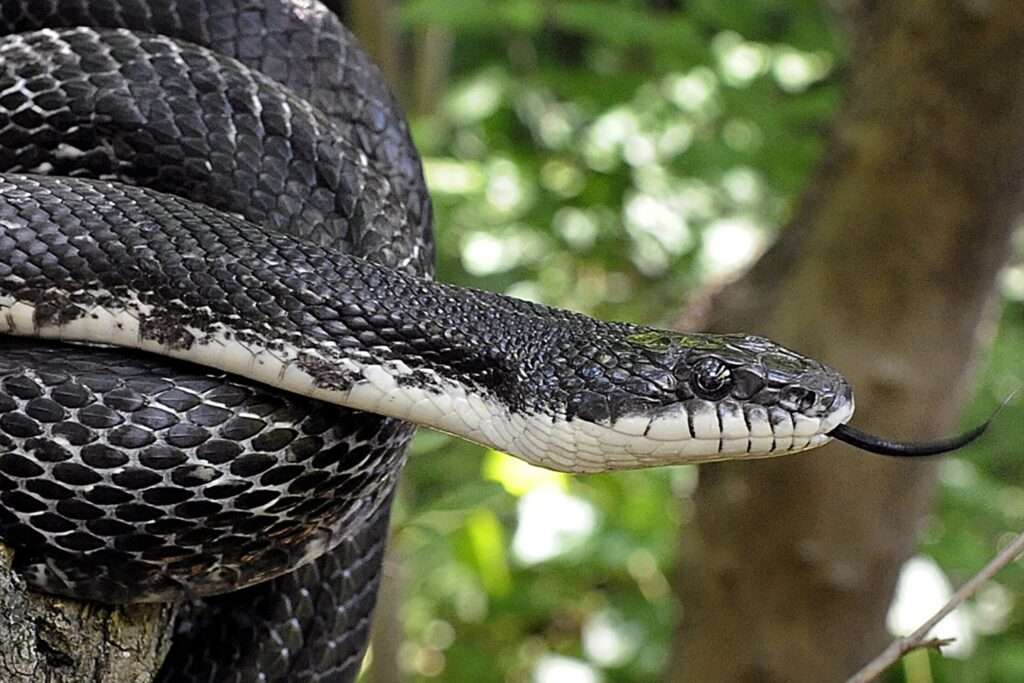
Description:
Scientific name: Pantherophis obsoletus
Life span: 10-15 years
A type of snake is the black rat snake (Pantherophis obsoletus); often referred to as the western rat snake, pilot black snake, or black snake. The black rat snake can reach lengths of three to six feet. It features a white belly and chin and a black, scaly body. Hatchling black rat snakes are light gray in color with black patches running along their backs.
Native Region/Habitat
Eastern and central parts of the United States are home to black rat snakes. They can survive at a variety of elevations and inhabit a variety of environments, including flat farmland and rocky hillsides.

Behavior:
Black Rat snakes have erratic behavior. When cornered or captured, the majority become combative. They frequently vibrate their tails in leaf litter, prompting some people to mistake them for poisonous rattlesnakes and ultimately killing them. Other people, on the other hand, are quite docile and do not object to handling.
Care As a pet/In captivity:
- The larger (and taller) the better, however a 30- to 40-gallon tank would do. Always have a water bowl available that is big enough for your snake to fit in and soak thoroughly. After their cage is set up, rat snakes do not need much upkeep because they are robust reptiles.
- Compared to certain other snakes, rat snakes prefer lower temperatures. However, you should maintain their enclosure between 80 and 85 degrees Fahrenheit, with a minimum temperature of 70 degrees Fahrenheit at night, to prevent them from hibernating. Use specialized reptile heat lamps to keep these temperatures steady.
- The ideal humidity range for black rat snakes is between 35% and 60%. When shedding, the humidity should be at its highest level. Hygrometers are used to measure humidity, which can be raised using misting or a bowl of water if necessary.
- They will consume pre-killed prey in captivity, which is a much safer option. Living prey can bite or damage a snake in various ways, particularly if the snake isn’t immediately interested in eating it. Since they are widely available from many pet stores and can be acquired frozen in bulk online, mice and rats make the ideal prey for pet rat snakes. A decent beginning point is to feed an adult rat snake once per week, however feeding frequency will vary based on the size of the food and the snake’s size.
Table





